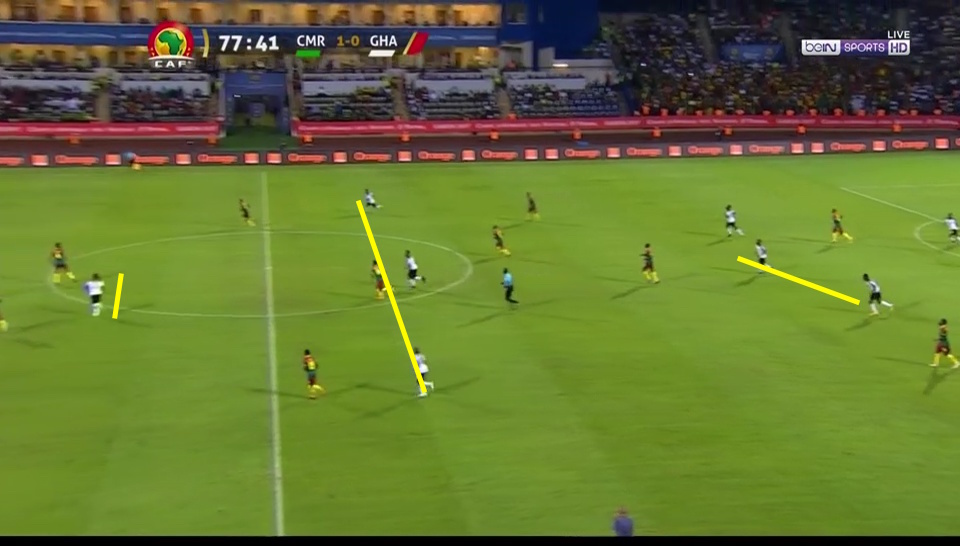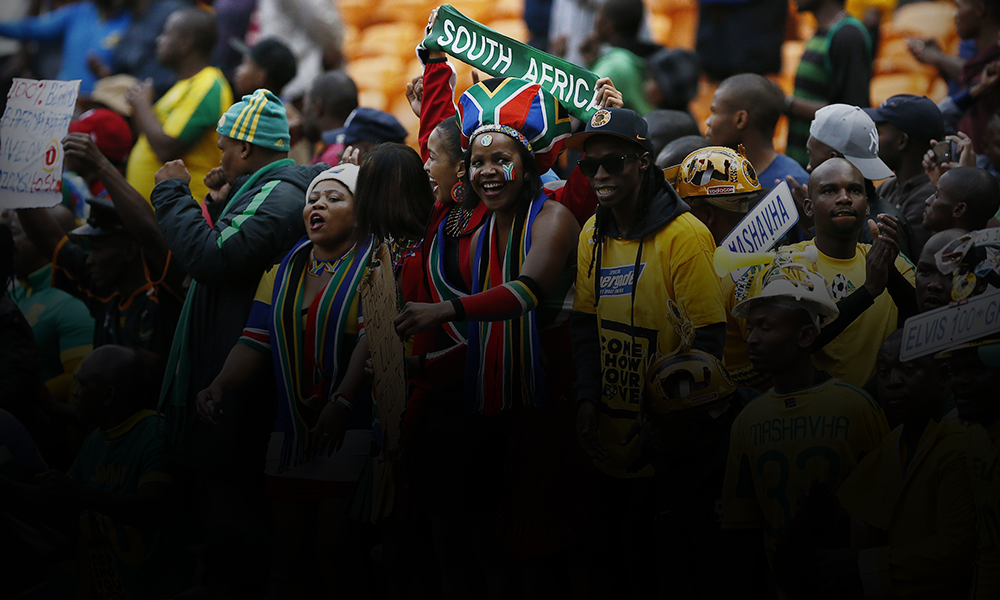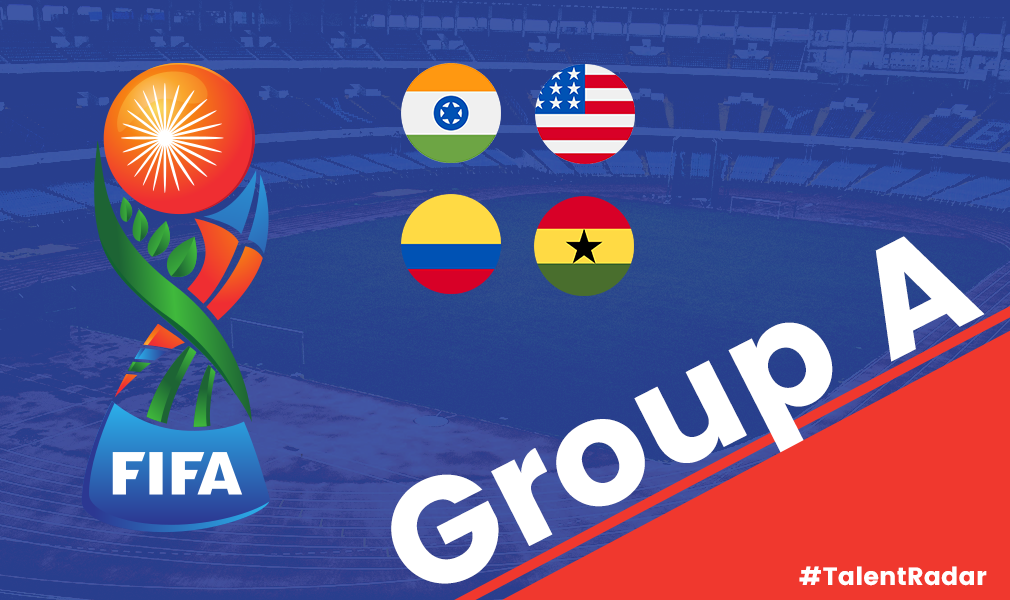Eric Devin writes a detailed tactical analysis about the AFCON semi-final that ended Cameroon 2-0 Ghana.
Cameroon (4-2-3-1): Fabrice Ondoa; Collins Fai, Michael Ngadeu, Adolphe Teikeu, Ambroise Oyongo; Sébastien Siaini, Arnaud Djoum (Georges Mandjeck 77’); Christian Bassogog, Jacques Zoua, Benjamin Moukandjo; Robert Ndip També (Vincent Aboubakar 73’)
Ghana (4-3-3): Brimah Razak; Harrison Afful, John Boye, Daniel Amartey, Frank Acheampong; Thomas Partey (Emmanuel Badu 86’), Afriyie Acquah (Asamoah Gyan 75’), Mubarak Wakaso; Christian Atsu, Jordan Ayew, André Ayew
A cagy and combative match, Cameroon’s 2-0 Africa Cup of Nations semi-final win over Ghana marked yet another disappointment for a supremely talented Ghana side. Despite regular qualification for World Cups and a number of their players playing in the world’s top leagues, Ghana have failed to win this tournament since 1982. They finished runners-up in 2010 and 2015, but there has started to be some suggestion that this generation, particularly Asamoah Gyan, may have missed its chance, even if the likes of the Ayew brothers and Mubarak Wakaso likely have another tournament or two in them.
The final margin flatters Cameroon, who scored on the break in injury time, but the winners do deserve credit for a disciplined, energetic performance, led by their captain, Benjamin Moukandjo, whose industry on the left wing did much to mute the pace of Christian Atsu. He was far from alone in excelling though, as a fluid midfield and aerial domination by the two unheralded center backs, Ngadeu and Teikeu, allowed Hugo Broos’ men to exert their influence in a physical affair. It wasn’t as though Ghana didn’t make an effort, particularly in the second half, but their overall approach was too negative, especially given the space available to them on the flanks via Cameroon’s rather narrow back four.
Ghana nominally played a 4-3-3, but the system often functioned more like a 4-4-1-1, with André Ayew in a loose role behind his brother, Jordan. The sense behind this for Avram Grant was patent; the former Marseille man is easily Ghana’s most creative player, and in allowing him to tuck inside, the manager’s hope was to allow him to link play with a more prosaic midfield, with the speedy Atsu stretching play on the right. This was well and good in defense, but going forward, Atsu cut inside too often, meaning that Ghana’s shape was consistently narrow both in and out of possession.
In defense, Ghana played very deep, as the first image shows, with Ayew dropping deep on the left, here to challenge Bassogog on the ball. Cameroon nominally played a 4-2-3-1, but the idea that Zoua or Ndip També are anything approaching a creative player is laughable. The two are physical, hard-working strikers, and their effectiveness is a product of their willingness to stay moving, becoming a threat through interchanging spots and dragging defenders out of position. That had the knock-on effect of forcing Benjamin Moukandjo to play as, if not quite a no. 10, at least a roving creative force. Here, he has cut through the box before laying the ball off to Bassogog, who played as an orthodox winger.
Moukandjo, who operates as a striker when with his club, Lorient, was thus able to be an option for a return pass into the box, his pace providing a counterweight to the more conventional styles of Zoua and Ndip També. To cope with this, Ghana played with a very narrow back four, but to create balance and track Bassogog, André Ayew has to play very deep, which limits his ability to be involved if Cameroon lose possession and Ghana try to counter. Atsu (near the “D”) and Jordan Ayew (not in the frame) are outlets, but note that Cameroon haven’t left themselves exposed in this regard, as the defensive midfielders, Siani and Djoum, haven’t gotten involved in the attack, nor have the fullbacks. Thus, Cameroon were able to force Ghana to sit deep and narrow, while still being able to protect themselves against counterattacks.
When Cameroon do get their fullbacks involved, as they do here, the effect on Ghana is even more pronounced. Moukandjo is on the near side now, with Oyongo and Fai pushed high up the pitch, and Ghana have effectively resorted to playing with five at the back. Not that even Ayew has dropped deep as Djoum (on ball) and Saini push up to try and further compress their opponents. Fai isn’t naturally an attacking player, though, and while Oyongo is a bit more adventurous, Cameroon failed to push the envelope with any great success in this regard, the two fullbacks generally sitting deep, wary of the pace of the Ayew brothers and Atsu.
Ghana was able to be fairly effective in packing the box when Cameroon tried to build possession, but as the above images show, their narrow back four looked forlorn when caught on the counter. Wakaso and Partey are tremendous box-to-box players, and I have personally advocated for more playing time for Partey at Atletico Madrid, but against Cameroon, he perhaps showed why Diego Simeone has displayed such a high degree of reticence, even in the absences of Tiago and Augusto Fernandez. A pacy and powerful dribbler, Partey is also guilty of the occasional loose touch, and he and Wakaso, desperate to press their numerical advantage in midfield, lost the ball with a somewhat disturbing regularity.
In the first image, Ghana’s back four, seemingly accustomed to having the protection of the midfield, place all of their focus on stopping Zoua and Ndip També. However, without that bulwark in front of them, even as Acquah strives to pressure Zoua, their single-mindedness has left Moukandjo (near side) and Bassogog free on the flanks (white arrows). In the second image, the same thing occurs, but to an even greater degree. Moukandjo, once again playing the creative role, has cut inside, but Oyongo (yellow circle) has got forward to provide width. Cameroon have made a bit of a mess of this particular attack with their spacing (white diamond), but note that neither Atsu, tracking back, or Afful, the right back, have picked up the run of Oyongo.
While their defensive awareness could be lacking at times, even as they sat deep, Ghana did employ a strong high press. Even as it sometimes lacked the necessary numbers to be as effective as perhaps Grant would have wanted, it had much to do with the reticence of Cameroon’s fullbacks to get forward. In speaking of Fai and Oyongo getting forward, it should be said that they haven’t generally played in this tournament as the archetypal modern fullbacks, bombing on and supporting the attack, but under the duress of Ghana’s press that was even more the case, as they needed to provide an outlet for Ngadeu and Teikeu.
In the first image, Jordan Ayew hounds Ngadeu on the ball as Teikeu desparately sprints back to offer an easy outlet behind him, while Oyongo likewise tries to make ground on the near side. As good as Cameroon’s center backs are in the air and with their positioning, they definitely don’t fall into the modern center back archetype of being able to play the ball out of the back, either with it at their feet, or via long passing. Ayew was a willing runner in this regard, but because so many of his teammates had dropped deep to pack the box, Ghana’s press was often ineffective. The second image, from early in the second half, shows a much different story; Partey has pushed up, but again, because André Ayew and Atsu aren’t reacting, or joining in, owing to their defensive responsibilities. The desired effect is once again missing; Grant’s idea is good in practice, as he has readily identified a weakness of Cameroon’s, but his team lacks the cohesion to execute the appropriate pressure.
There were more weaknesses to be had, too. In the first image, we see the aforementioned directness of Partey, running with the ball at his feet as Jordan Ayew peels toward goal for a cross. As quick as Partey is, though, he is no match for Moukandjo, who is barreling after him with great intent, using his pace to track back with confidence. Moukandjo was at this all evening, and despite the best intentions from Ghana’s two central midfielders, Partey and Wakaso, to get involved, the discipline shown by Cameroon’s two wide players, Moukandjo and Bassogog was impressive in nullifying their attempts.
In a 4-3-3, long balls are in imperative component in the way that the midfield affects the attack. The range of a Xavi, a Marco Verratti or Xabi Alonso makes the system tick, but Ghana’s lineup lacked that, as all three of their midfielders rely more on pace and power than any sort of nuance. The second image shows how Ghana would have had more luck playing the ball over the top, as Cameroon, much like their opponents, tended to have the fullbacks tuck inside to make the back four very narrow. Here, Atsu is measuring his stride before latching on to a ball over the top from Acquah. Oyongo, the Cameroonian left back is much too far away to effectively mark the Newcastle winger, and even if Ghana’s midfield didn’t contain the most cultured of midfielders, these opportunities were present more than Cameroon would like to admit. In this instance, Atsu was wrongly flagged offside, but not without having first created a good opportunity; why Ghana didn’t attempt more in this vein is somewhat of a mystery, perhaps owing to the midfield trio’s lack of belief in their range of passing.
Ghana similarly had opportunities on the left when Acheampong got forward as well. The Anderlecht player, being used at left back in the absence of the injured Baba Rahman, is usually used in midfield or on the wing with his club. He has pace to burn, but generally sacrificed his attacking proclivities for the good of Grant’s low block. These images again show Cameroon exposed through their narrow back four, as Ghana seek to build from open play and, in the second image, on the counter. The pacy fullback has found all the space he wants, but this route was rarely taken in the course of the match. It was strange not see Acheampong more involved going forward given the reticence of Fai in particular to attack; given the way that Rahman usually plays, it would seem to manifest as a continuation of Ghana’s system. Grant obviously valued staying defensively sound, but especially after going behind, he should have given Acheampong more license to bomb on.
After going behind, Grant instead reacted by bringing on Asamoah Gyan for Acquah, which saw the system shift to a 4-2-3-1, seen here. However, it was poorly applied, both in terms of personnel and execution, which led to a lack of cohesion. Neither Partey nor Wakaso are naturally orthodox defensive midfielders, and both seemed to be caught in two minds, which saw them unable, or unwilling to contribute to the attack as they had in the 4-3-3. Grant may have done better to keep Acquah on the pitch, which would have given his partner more freedom to support the attack.
In attacking midfield, Jordan Ayew played centrally, with his brother and Atsu playing slightly deeper than they had in the 4-3-3. However, instead of seeking to exploit Cameroon’s narrow defense, they, too tucked inside. They also failed to play close enough to Gyan to properly support him, and the argument could also be made that André should have been played centrally, with Jordan on the wing. Neither is a natural centrally, but André is more creative, while Jordan is quicker, which would have again presented Ghana with more opportunities on the flanks.
These final images show Ghana attempting to find an equalizer, with Cameroon playing very deep with two banks of four, much as their opponents had in the first half. Afful, the Ghanaian right back has gotten forward to try to pick out one of André Ayew or Partey in the box, while Gyan has moved to the right, attempting to offer an outlet for a one-two with the Columbus Crew man. However, despite Ayew’s presence in the box, and that of Partey, Ghana simply fail to commit adequate numbers to the strategy. Jordan Ayew is nowhere to be found, and Acheampong lurks tentatively away from play, rather than commit himself to the attack as one might think given the scoreline. Gyan, too, should be looking to get on the end of a cross, or to at least be moving toward goal; Ghana were simply too subdued in a desperate situation.
The second image shows Ghana, with minutes left, playing with more intent, but being undone by selfishness. Even as Acheampong (orange arrow) seeks to get involved, the Ghanaian attackers, being kept on by Teikeu, rather than seeking to peel wide to draw a defender or two out of position, simply watch the ball. There is no attempt to provide a better option for a pass, even as Cameroon seek to close down the ball. Ghana are undoubtedly more talented than Cameroon top to bottom, but this lack of intent and vision only served to stymy their attack.
It may be cruel to suggest that a team deserves to lose, but Ghana fall into this category. Cameroon had hardly been a defensive fortress throughout the tournament, at least not on the order of a side like Egypt. This piece should have plainly showed the Indomitable Lions’ weaknesses in defense, but Ghana’s negative tactics prevented them from taking advantage as they should have. The news has come through today that Avram Grant will leave his job after the tournament, and on the basis of this result, it’s hard to say that outcome is undeserved. This hasn’t been a tournament of stalwart defending, but rather of opportunities not taken; Ghana have decidedly continued that trend and have only themselves to blame for their elimination.
Read all our tactical analyses here






































































